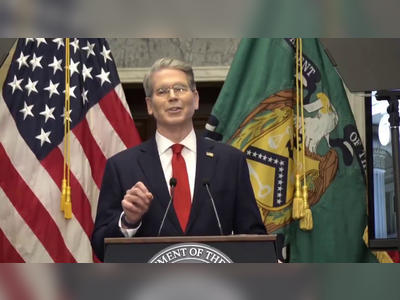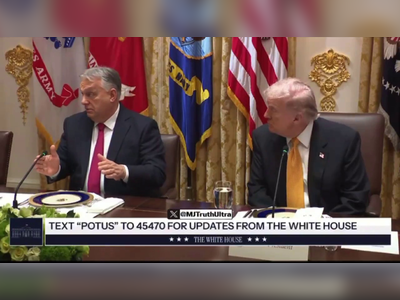
The Other Side of the Digital Coin: Central Bank Digital Currencies and Sanctions
Almost every day it seems a new form of digital money emerges, often touted as the next hot idea. But with so many governments indicating interest in these developments, central bank digital currencies (CBDCs) might actually be a technology to change the world.
WHAT IS A CBDC?
A CBDC is a digital form of currency issued by central banks, which often have a monopoly over the issuance of currency within their own state’s territory. As a currency it is different from traditional reserves or settlement accounts, which are the established way for central banks to issue their ‘physical’ currencies. Although evidently inspired by cryptocurrencies such as Bitcoin, CBDCs are more like cash. While Bitcoin and Ethereum prices fluctuate wildly and could lose their value entirely, CBDCs are backed by a government, and are legal tender in the country in which they are issued. Thus, it is easiest to conceptualise them as digital banknotes, despite being inspired by decentralised cryptocurrencies. And although not an absolute necessity, many CBDCs are based on distributed ledger technology – decentralised databases managed by multiple participants or nodes – which is the technological infrastructure underpinning blockchain and cryptocurrencies.
CBDC models do vary by jurisdiction, and can be broadly grouped into two main types: wholesale and retail/general purpose. It is worth noting that most countries discussed are creating retail CBDCs (those widely available and targeted at payments between individuals and businesses).
Design choices also vary: CBDCs can be token-based or account-based. The former draws more from typical cryptocurrency models, using private and public key pairs similarly to Bitcoin. The latter requires each user to hold an account with the central bank, with transaction approval dependent on identity verification. It seems that most CBDCs will adopt the latter model.
GLOBAL INTEREST IN CBDC USE
A 2020 survey conducted by the Bank for International Settlements found that ‘80% of the world’s central banks had already started to conceptualise and research the potential for CBDCs’. Perhaps this is no surprise given the declining use of cash, spurred on by the coronavirus pandemic and the necessity of contactless payments.
Even before the pandemic, cash use was already declining in many advanced economies, a trend that has worried central banks, which aim to foster public access to and trust in central bank money. A CBDC has the potential to address this trend and help countries in a variety of ways, including fostering financial inclusion by expanding the number of people who have access to banking services and by enhancing the effectiveness of monetary policy. For citizens, a digital banknote could perhaps be the safest form of money.
CBDCs are no longer just theoretical. In late 2020, the Bahamas launched the Sand Dollar; China is in the news frequently for its progress with the digital yuan; and the EU, the UK and the US have all indicated their interest in exploring their own CBDCs.
This domestic focus is also coupled with international ambitions, as many countries aim to improve cross-border payments through CBDCs. While there are debates over the best ways to ensure CBDC interoperability, there is a strongly held belief that CBDCs can benefit the global economy. But herein lie the international security risks, especially when looking at the effectiveness of financial sanctions.
EFFECT ON SANCTIONS
Many countries face various sanctions regimes from the US and the EU, or those mandated through UN Security Council resolutions. Countries sanctioned heavily by the US show particular interest in CBDCs, and some have even explicitly stated their intention to evade US sanctions through popularising their own CBDC.
China is the most notable of these, especially given its progress and success in this space with the digital yuan, also known as DC/EP (Digital Currency/Electronic Payment). In November 2020, Beijing announced that almost $300 million had been spent using DC/EP in four million domestic transactions. The aim is for broad circulation by 2022 with an intention to test DC/EP at the 2022 Beijing Winter Olympics.
Russia, Venezuela and Iran, all facing US sanctions, have also shown various levels of interest in CBDCs. In March, Moscow said that the first prototype of a Russian CBDC will be launched in late 2021. Venezuela’s President Nicolas Maduro has long tried to popularise the Petro coin, claiming that the pre-sale alone raised $3.3 billion. These numbers are unconfirmed and the Petro is largely seen as a failure. Meanwhile, Iran is also conducting research.
DETHRONING THE DOLLAR
It is easy to understand why any government would be interested in a CBDC. For US-sanctioned countries, though, there might be additional long-term benefits to investing in this technology. Currently, the US can exert power over these countries due to the ubiquity of the dollar – as of 2019, approximately 88% of all foreign exchange trades were backed by the dollar. Widespread adoption of CBDCs could reduce the dollar’s domination, lessening the power of US sanctions.
Multiple US-sanctioned countries have specifically listed decreased dependence on the dollar as part of their motivation for creating a CBDC. Russia’s central bank said that a digital ruble could help mitigate the risk of sanctions. Chinese state media claimed in 2020 that ‘sovereign digital currency provides a functional alternative to the dollar settlement system and blunts the impact of any sanctions’. Iran’s President Hassan Rouhani specifically proposed a cryptocurrency-related payment system among Muslim countries to cut regional reliance on the dollar. When announcing the Petro, President Maduro claimed the coin would ‘help to overcome the financial blockade’.
Washington is aware of these motives. In March 2018, then-President Donald Trump banned US companies and citizens from dealing with Venezuela’s Petro coin. More recently, US officials, speaking on condition of anonymity, told the Bloomberg news agency that the Biden administration is ‘eager to understand how the digital yuan will be distributed, and whether it could also be used to work around US sanctions’.
Another function of CBDCs is the ability to oversee and monitor citizens and financial transactions. Any account-based CBDC potentially allows tight control by the central bank over the finances of the users. While this will be helpful in identifying illicit activity, it also means that the central bank can see exactly what citizens are doing to an extent previously unimaginable in traditional finance.
The type of anonymity used in the centralised CBDC models means that both parties in a transaction would likely be anonymous to the public but visible to the central bank. CBDCs therefore offer less privacy than cash, a feature that may add to their appeal in authoritarian countries.
WHAT IS NEXT?
One of the biggest unresolved questions concerns the level of infrastructure compatibility between the different CBDC models that are emerging. The long-term impact of a CBDC like DC/EP cannot be understood until there is some ability to exchange the CBDC for other fiat currencies – successful internationalisation of any currency (physical or digital) is near impossible without exchange options.
Furthermore, what impact might CBDC conversion into other digital currencies have? For example, if China allowed conversion from DC/EP to cryptocurrencies, would this enable a new sanctions evasion route for North Korea, a country already known for its cryptocurrency expertise? It seems unlikely that China’s CBDC would engage with decentralised cryptocurrencies, especially given Beijing’s bans on the technology, but it is possible.
Sanctioned countries are far from the only jurisdictions interested in this technology, and the interoperability of CBDCs applies equally to the UK’s potential Britcoin or the digital euro – perhaps even more so given these countries’ centrality to international trade. Yet as with any promising innovation, anticipating the potential for abuse will be an important consideration as this technology proliferates.
The views expressed in this Commentary are the author’s, and do not represent those of RUSI or any other institution.











